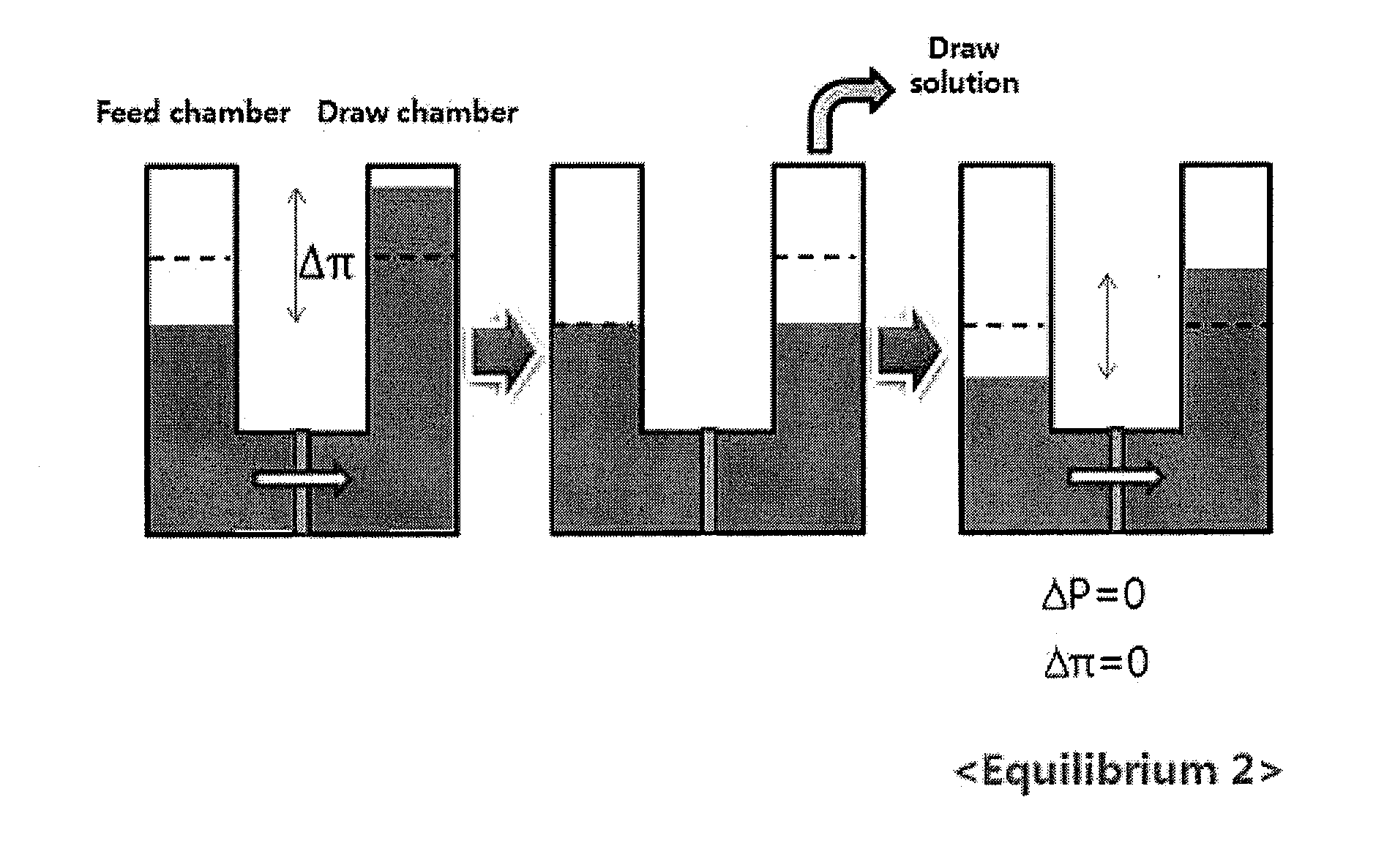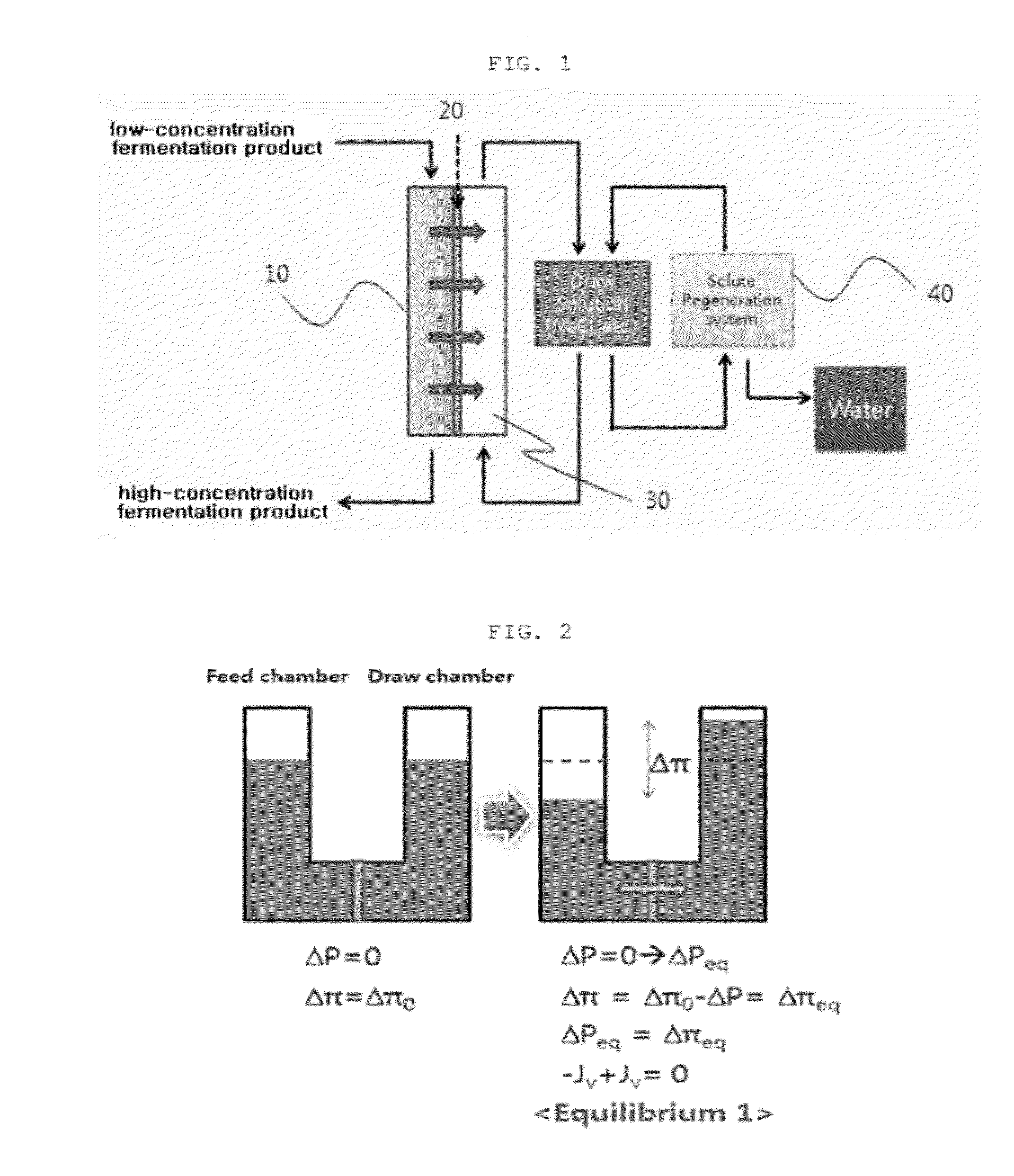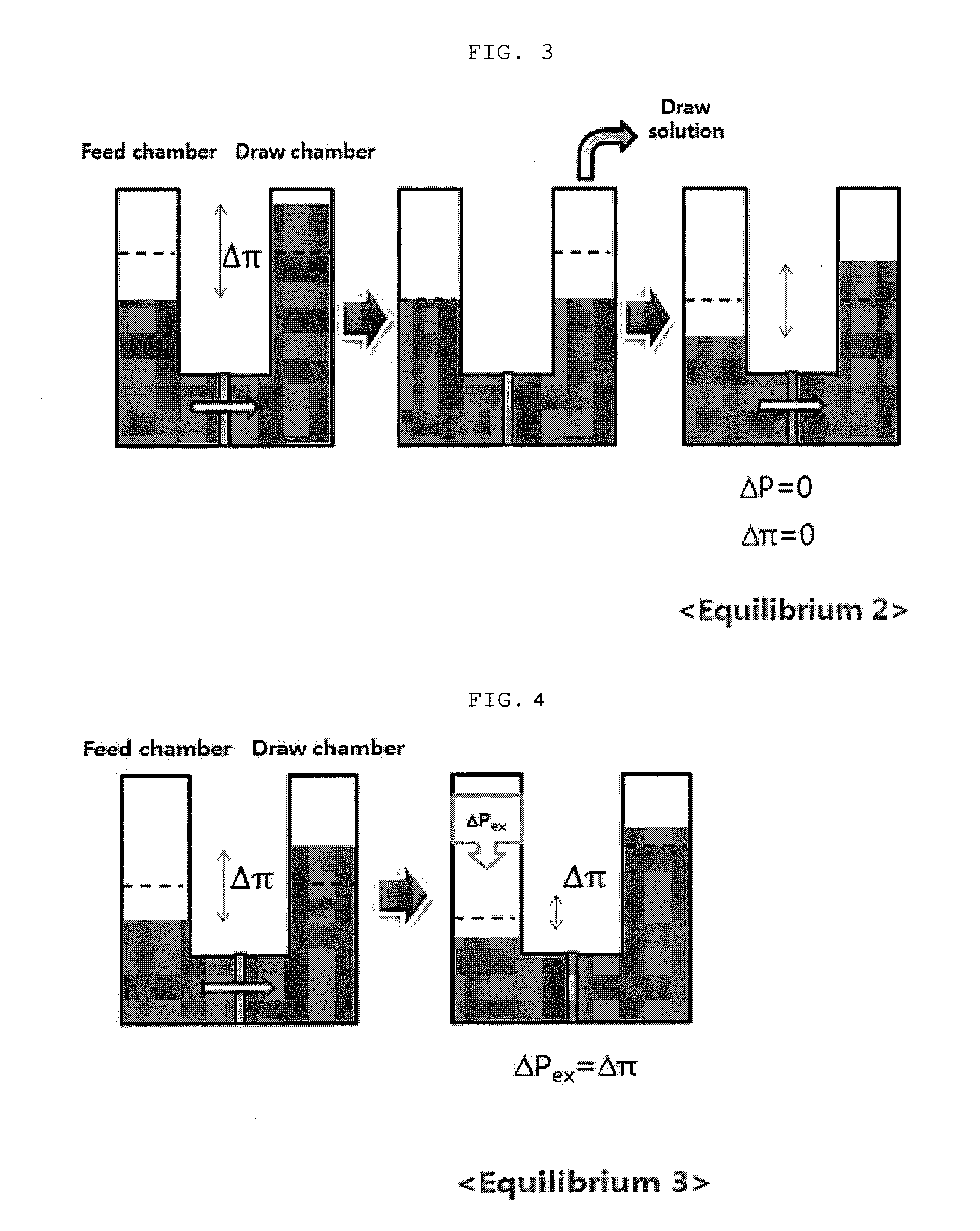Method of concentrating low titer fermentation broths using forward osmosis
a technology of forward osmosis and fermentation broth, which is applied in the direction of reverse osmosis, biomass after-treatment, membranes, etc., can solve the problems of energy consumption, solvent extraction, extraction solvents, and the like which are used in these methods, and achieve the effect of minimizing energy consumption and operating costs and maximizing the concentration of fermentation broths
- Summary
- Abstract
- Description
- Claims
- Application Information
AI Technical Summary
Benefits of technology
Problems solved by technology
Method used
Image
Examples
example 1
Concentration of Succinic Acid
[0066]A test for concentration of succinic acid using forward osmosis was carried out. A succinic acid solution used as a feed solution was a fermentation product resulting from an actual fed-batch fermentation process, and a forward osmosis reactor comprising a forward osmosis membrane (HTI, USA) made of cellulose triacetate was used. A draw solution used in the test was 30 wt % NaCl (feed solution: 300 mL, and draw solution: 300 mL). The pH of the succinic acid solution used in the test was adjusted to 8-9 by ammonia water.
TABLE 1VolumeConcen-oftrationsuccinicofpH ofVolumeFlowRe-acidsuccinicsuccinicofrate ofjectionTimesolutionacidacideffluenteffluentratioRe-(hr)(mL)(g / L)solution(mL)(mL / hr)(%)marks030067.428.82000Start16.5195100.978.831056.36149.7528.5164124.248.84351.23184.2740.5144147.628.41170.41218.9588129153.828.33150.17228.14
[0067]As a result, as can be seen in Table 1 above, water could be removed from the succinic acid solution using the forwar...
example 2
Concentration of Total Volatile Fatty Acids
[0068]A test for concentration of total volatile fatty acids using forward osmosis was carried out. Total volatile fatty acids used in the test were acetic acid:propionic acid:butyric acid (6:1:3) which generally result from an acid fermentation process. A forward osmosis reactor comprising a forward osmosis membrane (HTI, USA) made of cellulose triacetate was used in the test. A draw solution used in the test was 30 wt % NaCl (feed solution: 300 mL, and draw solution: 300 mL). The pH of the total volatile fatty acids used in the test was adjusted to 9 by ammonia water.
TABLE 2Concen-VolumetrationofofvolatilevolatileVolumeFlowRe-fattyfattypH ofofrate ofjectionTimeacidacidfeedeffluenteffluentratioRe-(hr)(mL)(g / L)solution(mL)(mL / hr)(%)marks0300939.46000Start4276102.299.34246.00110.0017228120.839.22482.82129.9429199129.619.14291.00139.3846181147.759.02180.39158.88
[0069]As can be seen in Table 2 above, water could be removed from the volatile fa...
example 3
Concentration of Microalga
[0070]A test for concentration of microalga using forward osmosis was carried out. Microalga (Nannochloropsis oculata, Utex, USA) was grown in F / 2 media at 26° C. for 2 weeks in the presence of light and CO2, and then used as a feed solution in the test. A forward osmosis reactor comprising a forward osmosis membrane (HTI, USA) made of cellulose triacetate was used in the test. A draw solution used in the test was 20 wt % NaCl (feed solution: 350 mL, and draw solution: 350 mL).
[0071]The optical density (concentration) of the microalga was measured at 680 nm using UV-Vis spectrometry.
TABLE 3Volume ofConcen-Flowmicroalga-trationratecontainingofVolume ofofTimesolutionmicroalgaeffluenteffluentRejectionRe-(hr)(mL)(g / L)(mL)(mL / hr)ratio (%)marks03500.705000Start102800.820707.05116.6
[0072]As can be seen in Table 3, water could be removed from the microalga-containing solution using the forward osmosis process, thereby increasing the concentration of the microalga i...
PUM
 Login to View More
Login to View More Abstract
Description
Claims
Application Information
 Login to View More
Login to View More - R&D
- Intellectual Property
- Life Sciences
- Materials
- Tech Scout
- Unparalleled Data Quality
- Higher Quality Content
- 60% Fewer Hallucinations
Browse by: Latest US Patents, China's latest patents, Technical Efficacy Thesaurus, Application Domain, Technology Topic, Popular Technical Reports.
© 2025 PatSnap. All rights reserved.Legal|Privacy policy|Modern Slavery Act Transparency Statement|Sitemap|About US| Contact US: help@patsnap.com



